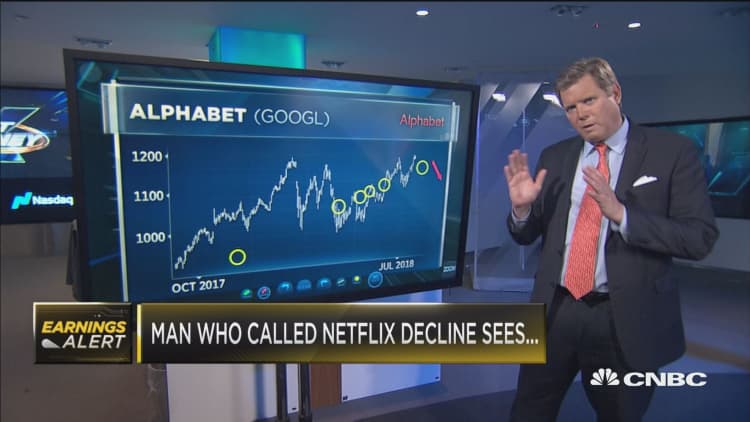Starting Monday, investors who have played the momentum in FANG stocks may find some of that juice in a new communications services sector formed by S&P Dow Jones Indices.
Three of the four FANG stocks will become part of the new sector, which will replace telecom, as one of the 11 major S&P industry groups. MSCI has partnered with S&P Dow Jones and is revamping global indexes to reflect the new sector.
Industry groups are like a road map to the and stock market, and are at the core of many exchange-traded funds. They are also used by major investors as they rate sectors and designate holdings. The changes being made with the communications services sector will affect $2.8 trillion in market cap, according to CFRA.
The new communications services industry will retain traditional telecom stocks like AT&T and Verizon, but now include media companies like CBS, Walt Disney and News Corp., and social media names like Twitter and Facebook.

With the exception of Amazon, the other FANG stocks — Facebook, Netflix and Alphabet, parent of Google — are joining the new sector. Facebook and Alphabet are leaving tech and Netflix is departing consumer discretionary. Amazon will remain in consumer discretionary, and eBay jumps from tech to join it in the largely retail-oriented sector.
While it may sound like inside baseball, the changes in the S&P sectors should, over time, result in massive shifts in stock ownership as money managers realign their portfolios, ETFs restructure holdings, and Wall Street strategists give new weighting to both old and newly aligned industry groups. Some of the changes have already occurred, as there is already a new ETF , the Communications Services Select Sector SPDR Fund XLC, to reflect the sector.
Bottom line for investors is it may give a boost to the technology sector as big money managers end up underweight tech as Facebook and Alphabet leave the sector. There could also be new buying in some of the media and other stocks as managers add holdings in the communications services sector, and even as Netflix and Alphabet bring some of their momentum to the group.
"What you look at is managers have to look at where they're positioned versus their benchmark, and they can only be overweight or underweight by a certain amount," said Steven DeSanctis, equity strategist at Jefferies. "Large growth guys are going to underweight traditional tech. Small-cap growth guys have a big overweight in software."
The fact that some of widely held and followed FANG is a part of it makes some of the changes more profound. The changes take place at Friday's close but the current sectors will stay in place until the end of the quarter, a week later. Analysts expect the price-earnings ratio in tech to drop, as some of the high-flying names like Alphabet leave. CFRA says the market cap of the tech sector will shrink by about 19 percent.

The communications services sector will also not be the dividend play telecom was because of the fact it is made up of more than just telecom companies, traditionally high-yielders.
"Ultimately, the new communication service sector will better reflect the rapidly changing way the world's population communicates. It will result in a more cyclical, lower-yielding sector. The forward multiple on the new sector could be as high as 28.0x, up sharply from the lower growth, value-oriented telecommunication sector that currently trades at 10.6x," notes Lindsey Bell, investment strategist at CFRA.
Bell said the new sector should have fairly low volatility, and the sector's dividend yield will be 1.7 percent, compared with 5.4 percent for the telecom group.
DeSanctis said he's wondering if the changes are reflecting that FANG became such a big part of the market that a new sector was necessary.
"It makes you scratch your head and say, 'is that a peak? At least a peak in the short run?'" he said.
The new sector will represent about 9.8 percent of the S&P 500 index, with tech as the largest component of the new sector at 52 percent, according to CFRA. Consumer companies like Netflix are about 29 percent of the sector, while the telecom companies are about 18 percent.
Components of communications services sector
Source: S&P/Dow Jones Indices


